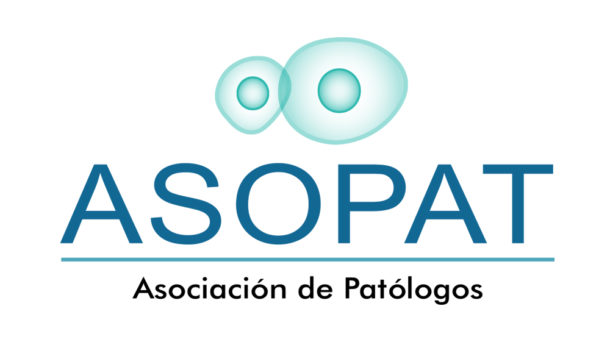In addition to playing with industrial facilities you to definitely encode development coordinating heuristics, we can and create labeling features you to definitely distantly supervise research products. Right here, we shall stream within the a listing of identin the event thatied companion pairs and check to see if the two off persons for the a candidate suits one among them.
DBpedia: All of our database out of understood partners arises from DBpedia, which is a community-passionate money just like Wikipedia but for curating prepared study. We shall have fun with an excellent preprocessed picture as the training base for everybody labeling setting creativity.
We could look at a number of the analogy records out of DBPedia and make use of them from inside the an easy faraway supervision brands function.
with unlock("data/dbpedia.pkl", "rb") as f: known_partners = pickle.load(f) list(known_partners)[0:5] [('Evelyn Keyes', 'John Huston'), ('George Osmond', 'Olive Osmond'), ('Moira Shearer', 'Sir Ludovic Kennedy'), ('Ava Moore', 'Matthew McNamara'), ('Claire Baker', 'Richard Baker')] labeling_function(information=dict(known_spouses=known_spouses), pre=[get_person_text]) def lf_distant_supervision(x, known_spouses): p1, p2 = x.person_labels if (p1, p2) in known_partners or (p2, p1) in known_spouses: get back Positive more: return Abstain from preprocessors transfer last_label # History label sets to possess understood partners last_labels = set( [ (last_label(x), last_label(y)) for x, y in known_partners if last_identity(x) and last_term(y) ] ) labeling_form(resources=dict(last_labels=last_names), pre=[get_person_last_names]) def lf_distant_oversight_last_brands(x, last_names): p1_ln, p2_ln = x.person_lastnames return ( Confident if (p1_ln != p2_ln) and ((p1_ln, p2_ln) in last_names or (p2_ln, p1_ln) in last_brands) else Abstain ) Use Labeling Characteristics with the Studies
from snorkel.labeling import PandasLFApplier lfs = [ lf_husband_partner, lf_husband_wife_left_windows, lf_same_last_identity, lf_ilial_relationship, lf_family_left_window, lf_other_dating, lf_distant_supervision, lf_distant_supervision_last_labels, ] applier = PandasLFApplier(lfs) from snorkel.tags import LFAnalysis L_dev = applier.pertain(df_dev) L_teach = applier.apply(df_train) LFAnalysis(L_dev, lfs).lf_summary(Y_dev) Studies the Term Model
Now, we will show a design of the brand new LFs to estimate its weights and you will blend their outputs. Since design is actually instructed, we can mix brand new outputs of LFs towards the just one, noise-alert degree term set for our very own extractor.
from snorkel.tags.design import LabelModel label_design = LabelModel(cardinality=2, verbose=True) label_design.fit(L_instruct, Y_dev, n_epochs=five hundred0, log_freq=500, seed=12345) Term Model Metrics
Due to the fact the dataset is highly imbalanced (91% of the names is negative), actually an insignificant standard that always outputs bad can get a good highest precision. So we measure the identity design making use of the F1 rating and you will ROC-AUC rather than precision.
from snorkel.study import metric_score from snorkel.utils import probs_to_preds probs_dev = label_design.assume_proba(L_dev) preds_dev = probs_to_preds(probs_dev) printing( f"Term model f1 get: metric_get(Y_dev, preds_dev, probs=probs_dev, metric='f1')>" ) print( f"Label design roc-auc: metric_get(Y_dev, preds_dev, probs=probs_dev, metric='roc_auc')>" ) Label design f1 rating: 0.42332613390928725 Name model roc-auc: 0.7430309845579229 Inside last part of the session, we’re going to have fun with our very own noisy studies names to train our very own prevent servers reading design. I start with selection aside knowledge analysis factors hence did not recieve a tag from any LF, because these analysis factors have zero laws.
from snorkel.tags import filter_unlabeled_dataframe probs_instruct = label_design.predict_proba(L_instruct) df_illustrate_blocked, probs_train_filtered = filter_unlabeled_dataframe( X=df_train, y=probs_train, L=L_teach ) 2nd, i illustrate a straightforward LSTM circle getting classifying candidates. tf_design contains features to possess processing possess and you may building the fresh keras design to own degree and you will testing.
from tf_model import get_model, get_feature_arrays from utils import get_n_epochs X_teach = get_feature_arrays(df_train_filtered) model = get_model() batch_size = 64 model.fit(X_teach, probs_train_filtered, batch_size=batch_proportions, epochs=get_n_epochs()) X_attempt = get_feature_arrays(df_attempt) probs_attempt = model.predict(X_test) preds_attempt = probs_to_preds(probs_sample) print( f"Decide to try F1 when trained with delicate labels: metric_score(Y_sample, preds=preds_attempt, metric='f1')>" ) print( f"Decide to try ROC-AUC whenever trained with silky names: metric_score(Y_test, probs=probs_shot, metric='roc_auc')>" ) Attempt F1 whenever given it mellow labels: 0.46715328467153283 Shot ROC-AUC when trained with smooth labels: 0.7510465661913859 Summary
In this example, we exhibited just how Snorkel can be used for Pointers Removal. I displayed how to create LFs one leverage keywords and outside degree bases (distant supervision). Ultimately, we demonstrated how a design taught with the probabilistic outputs regarding the brand new Name Model can perform comparable abilities while you are generalizing to all data points.
# Check for `other` matchmaking conditions anywhere between person says other = "boyfriend", "girlfriend", "boss", "employee", "secretary", "co-worker"> labeling_mode(resources=dict(other=other)) def lf_other_matchmaking(x, other): return Bad if len(other.intersection(set(x.between_tokens))) > 0 else Abstain 

Comentarios recientes